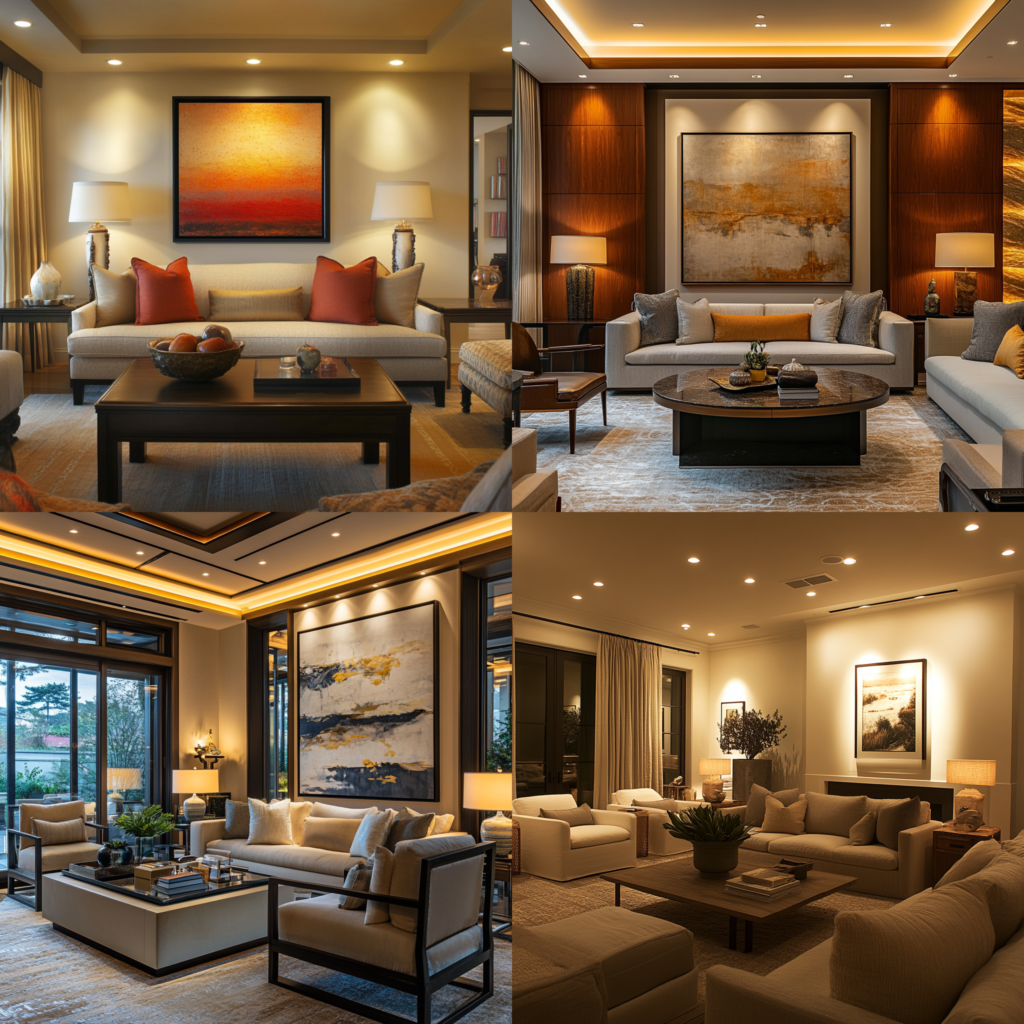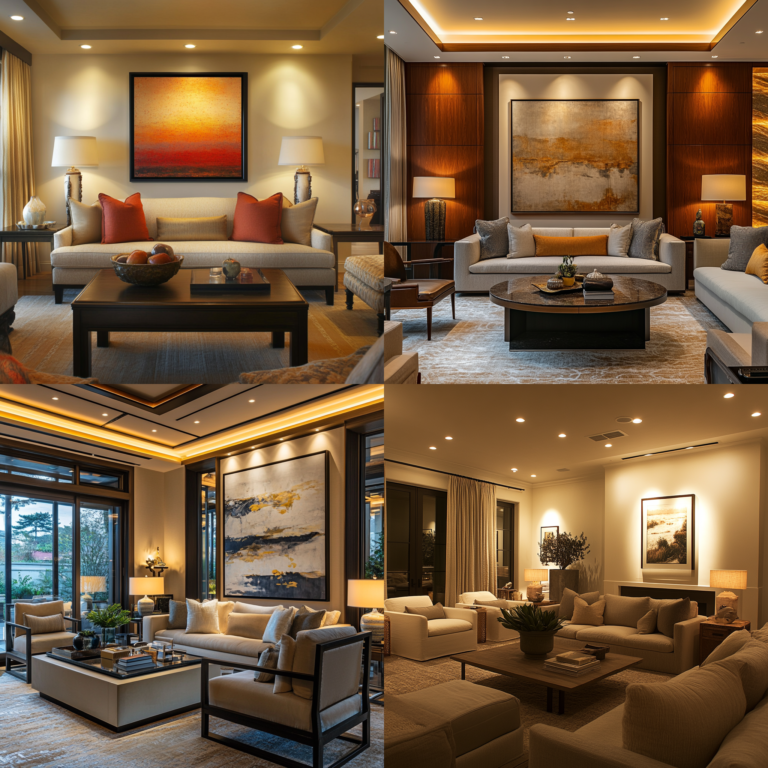Lighting is one of the most essential elements of interior design, influencing both the atmosphere and functionality of a space. Whether you’re designing a cozy living room or a modern kitchen, lighting design can drastically impact how the room feels. The right lighting not only enhances the aesthetics of your home but also improves its practicality.
Table of Contents
Here are 7 stunning lighting design ideas to help you create a well-lit and stylish home.
1. Layered Lighting
Layered lighting is a design technique that combines different types of light sources to create depth and flexibility in a room. By mixing ambient, task, and accent lighting, you can control the atmosphere and functionality of your space.
For example, in your living room, you can use overhead recessed lights for general lighting, table lamps for task lighting, and wall sconces for accent lighting to highlight artwork or architectural features.

2. Statement Lighting Fixtures
Make a bold statement with unique lighting fixtures. A striking chandelier, pendant lights, or a designer lamp can become the focal point of the room, adding style and sophistication.
In a dining room, for example, a grand chandelier can set the mood for elegant dinners, while in the living room, a modern pendant light can add a contemporary touch. Choose lighting fixtures that match your home’s overall style and elevate the space.
3. Use of Natural Light
Incorporating natural light into your lighting design is an easy way to enhance your space. Strategically place mirrors to reflect sunlight and maximize the amount of light coming in through your windows.
Additionally, consider using sheer curtains or blinds that allow light to filter into the room while maintaining privacy. Natural light creates a warm, welcoming environment and improves mood and productivity.
For more tips on room-specific decor, check out our Room-Specific Decor blog.
4. Dimmers for Control
One of the simplest ways to improve your lighting design is by installing dimmer switches. These allow you to adjust the light intensity according to the time of day or the mood you’re trying to create.
In the bedroom, for instance, a softer, dimmed light can create a relaxed atmosphere for reading or winding down. In contrast, bright lights in the kitchen or office can help you focus and stay productive.
5. Color Temperature for Mood
The color temperature of your lighting has a significant effect on the ambiance of a room. Warm lighting (around 2700K) creates a cozy, inviting atmosphere, while cooler lighting (above 4000K) promotes alertness and focus.
Use warm lighting in spaces like the living room, dining room, and bedroom to create a relaxed, intimate environment. Cooler lighting works well in areas like the kitchen, bathroom, and home office, where brighter, more energizing light is needed.
6. Accent Lighting to Highlight Features
Accent lighting is designed to highlight specific features or architectural elements within a room. Whether it’s artwork on the wall, a fireplace, or a beautiful piece of furniture, accent lighting adds visual interest and draws attention to the elements you want to showcase.
Consider using track lighting, spotlights, or picture lights to highlight artwork, sculptures, or other focal points in your home.
7. Smart Lighting Systems
Incorporating smart lighting into your lighting design can add convenience, energy efficiency, and customization to your home. With smart lighting systems, you can control your lights remotely using a smartphone app or voice commands.
Set the perfect lighting for different activities, whether it’s movie night or a dinner party, and save energy by scheduling lights to turn off automatically when not in use.
FAQs About Lighting Design
Q1: How can I improve the lighting in a small room?
A1: Use light-colored walls, mirrors to reflect light, and layered lighting. Opt for recessed lights and use furniture with reflective surfaces to maximize brightness.
Q2: What is the best lighting for a living room?
A2: Layered lighting is ideal for living rooms. Combine overhead lighting, task lighting like table lamps, and accent lighting to highlight artwork or decorative pieces.
Q3: How can I save energy with my lighting design?
A3: Use energy-efficient LED bulbs, install dimmers, and consider smart lighting systems that automatically turn off when not in use.
Q4: What are the best lighting options for a home office?
A4: Use bright, cool-toned lighting for focused work, combined with task lighting such as desk lamps. Avoid harsh overhead lights that cause glare.
Final Thoughts
Effective lighting design can transform any room in your home. By layering different types of lighting, incorporating smart systems, and choosing fixtures that complement your style, you can create a space that is both functional and beautiful.
Embrace these 7 stunning lighting design ideas to enhance the ambiance of your home and make every room shine.

